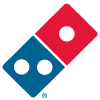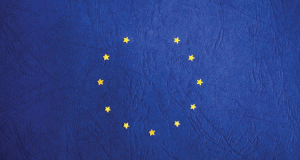Pizza delivery might not seem, on first glance, the most high-tech of industries. But Domino’s, the world’s largest delivery chain, has consistently pushed its brand towards new and developing tech, and as such it is now possible to order pizzas on Twitter, smartwatches and TVs, in-car entertainment systems such as Ford’s Synch, and social media platforms like Facebook.
The initiative to keep a Domino’s order button at the fingertips of their customers at all times is called Domino’s AnyWare. Of course, this multi-channel approach to interfacing with customers gives rise to the potential to generate and capture a lot of data – which Domino’s capitalizes on by using it to improve the efficiency of their marketing. I had the chance to talk to data management lead Cliff Miller and Dan Djuric, vice president of enterprise information services, about how the business uses Big Data to derive insights on customers, as well as how it sees analytics as the key to driving change across the industry. “Domino’s AnyWare literally translates to data everywhere,” Djuric tells me.
Data captured through all its channels – text message, Twitter, Pebble, Android, and Amazon Echo to name just a fraction – is fed into the Domino’s Information Management Framework. There it’s combined with enrichment data from a large number of third party sources such as the United States Postal Service as well as geocode information, demographic, and competitor data to allow in depth customer segmentation.
“Ultimately we start to build this unified customer view, measuring consistent information across our operational and analytic layers,” Djuric says. “So this is now where we start to tell the story.”
Information collected through the group’s point of sales systems and enrichment data add up to 85,000 data sources, both structured and unstructured, pouring into the system every day.
The family or household is fundamental to Domino’s tactics for segmenting customers. “Pizza ordering is a household exercise,” says Djuric.
“We have the ability to not only look at a consumer as an individual and assess their buying patterns, but also look at the multiple consumers residing within a household, understand who is the dominant buyer, who reacts to our coupons, and, foremost, understand how they react to the channel that they’re coming to us on.”
This means that individual customers or households can be presented with totally different presentation layers than others – different coupons and product offers – based on statistical modelling of customers fitting their profile.
Customer segmentation data is also used to assess performance and drive growth at individual stores and franchise groups. “We can work with a store to tailor their coupons, and tailor what we think their upselling capabilities might be in terms of adding more revenue. “But what we can also do is tell them what is not working for them – considering not only their market but comparing their market to other markets, and also to our competitive landscape.”
Domino’s investment in driving orders across their digital platforms has certainly borne results – the group now processes about 55% of its orders via online systems, with the remainder accounted for by traditional ordering methods such as telephone or in-person.
“We’re becoming more of a digital e-commerce operation, rather than a traditional quick service restaurant business,” Djuric tells me, “We’re leading the way, I think, in what we’re doing with social and what we’re doing with our digital platforms. And importantly, I think, it’s structuring the digital service with the insights we have on customers and practices, that leading our customers to a better, faster and more quality-based experience on our digital platforms. It has surprised us, how quickly we’ve transitioned from a traditional ordering mechanism into an e-commerce based profile.”
Domino’s data management lead Cliff Miller was also keen to talk about how influential analytics and Big Data has been in that transition. “We want to be sure we’re getting the best product we can to our customers as fast as we can, but we always want to analyze all segments of our business, as we believe being a data driven company gives us a lot of competitive advantages.”
“We’ve definitely moved away from a time when we were just processing data on sales and operational metrics in our warehouse, every business unit under our umbrella is looking to leverage data to make them faster and more cost effective.”
Domino’s relies on Talend’s Big Data Integration platform for much of the heavy back-end work. across Enterprise Data Warehouse . “We’ve already got a ton of stuff in Talend, and it’s become our de-facto enterprise data processing platform, it’s extremely flexible in terms of what it can do.”
“We’re an aggressively aspirational company and store growth is very important. We need to make sure we are on platforms which can scale.”
Domino’s is clearly a business which is not scared to move with the times. From pioneering online and TV-based ordering to advanced customer analytics, it has consistently moved to keep with the latest trends in technology. The logistics of delivering close to a million pizzas a day across 70 countries throws up exactly the sort of problems that Big Data is good at overcoming. The company has recently been experimenting with new delivery methods – such as a car with a built in oven capable of delivering 80 pizzas in one journey, in order to cut the carbon footprint of deliveries. It will be interesting to see where their enthusiasm for technology and analytics takes them in the future.
For Big Data certification – http://www.vskills.in/certification/Big-data




